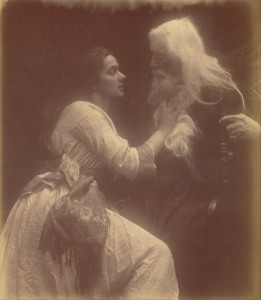

Playwright and poet Oscar Wilde is a prominent figure of the late Victorian Era, known for his aestheticism and somewhat scandalous nature. He is also an important queer writer, persecuted for his sexuality and eventual self-imposed exile from England. Many of his poems and plays contain double entendre and hidden meanings, a way of communicating homoerotic and homosocial desires. Wilde’s 1893 play Salomé: A Tragedy in One Act tells a story of forbidden and unrequited love, a theme which is captured in Aubrey Beardsley’s illustrations of the text.
If we are to look at these illustrations and consider the queerness of them, we cannot just think about their significance in relation to Wilde’s homosexual desires, after all, those are contemporary terms by Victorian standards. Holly Ferneaux defines queer as “that which differs from the life-script of opposite-sex marriage and reproduction.” Thus we have to ask how her definition applies to Beardsley’s illustrations of Salomé. Aubrey Beardsley had been asked to create a series of illustrations as a response to the play’s publication in 1893. Most of the images, sixteen in all, were censored and prohibited from being published in their original form. They were eventually published in the 1907 edition of the play, but some of the images were still censored.
Most of the illustrated characters, in particular Salomé and Iokannan (otherwise known as John the Baptist), possess the same appearance in figure, hair, and face. There is a sort of macabre androgyny attached to them, especially in the 15th illustration: “The Climax.” Salomé is depicted hovering in mid-air above lilied waters, bringing the severed head of Iokannan closer to her face in order to kiss it, as she has vowed to do multiple times throughout the play. Aside from her facial expression the two characters are almost like twins, having neither overtly feminine nor masculine characteristics. This is also the case with the second illustration, “The Title Page.” A devilish creature enwrapped in rose bushes is depicted with breasts as well as a penis and testicles (what is often described as “male genitalia”).
The question to ask now is why Beardsley’s artistic decisions matter for creating queer illustrations. Both of these images are examples of being queer, disrupting the gender binary by creating figures that exists outside of expectations of appearance based on perceived gender, allowing not only for homoerotic desire to be displayed, but for any desire and identity outside of the life-script of heterosexuality. Both the play and illustrations also invert heteronormative concepts of sexual conduct, making Salomé, despite being the femme fatale, the more active (or masculine) partner while Iokannon is, while resistant, feminine and passive. The OED defines the term “Uranian” as relating to homosexual love, but other dictionaries and Wikipedia also equate the word with “genderqueer” and other non-binary terms used by transgender and gender non-conforming people. Thus the illustrations capture a part of Wilde’s position as a queer person in Victorian England and subverting the societal expectations of desire, gender and performance.
A portion of the script as well as Beardsley’s illustrations can be found on the Victorian Queer Archive.
There is also a collection of the images on the British Library website.
Citation: Beardsley, Aubrey, and Oscar Wilde. Salomé: A Tragedy in One Act. 1893. John Lane, The Bodley Head, 1907.




